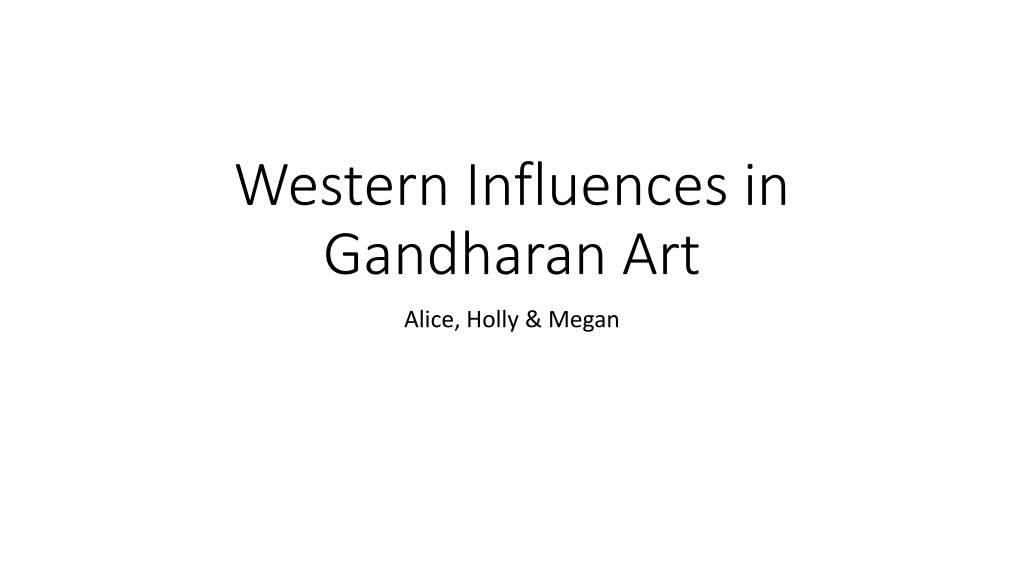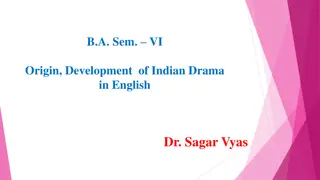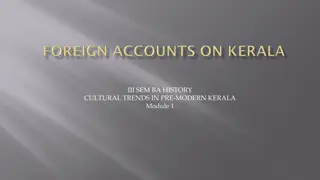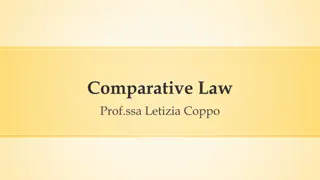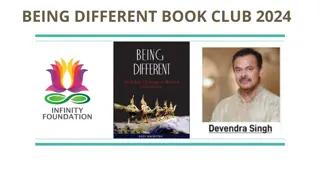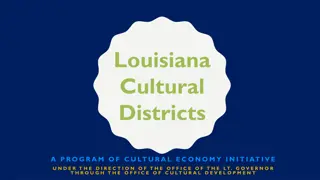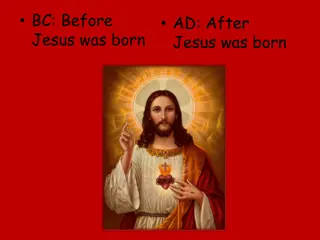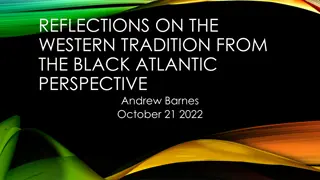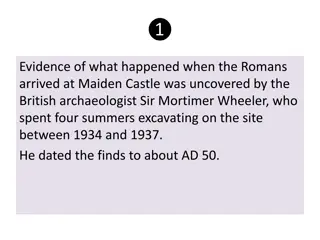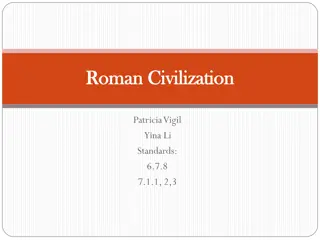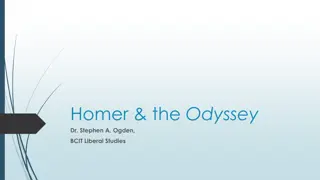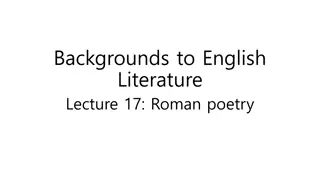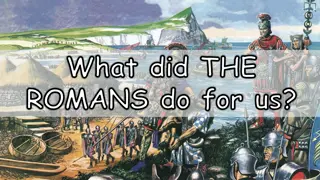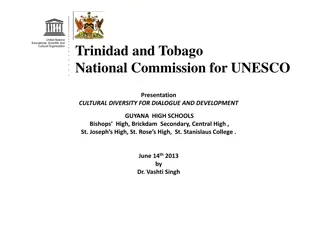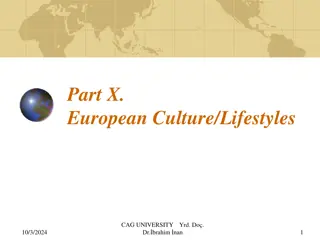Western Influences in Gandharan Art: Greco-Roman Impact and Cultural Blend
Western influences played a significant role in shaping Gandharan art between the 1st century BCE and 7th century CE. The art flourished during the Kushan Dynasty under various influences, notably Greco-Roman. The integration of Western elements transformed the artistic style in Gandhara, creating unique representations with influences from Greek and Buddhist traditions. Dating Gandharan art poses challenges due to limited inscriptions, but examples like the Trojan Horse depict a fusion of Hellenistic myths with Buddhist contexts. The use of Herakles as Vajrapani showcases a blending of Greek and Buddhist iconography in Gandharan art.
Download Presentation

Please find below an Image/Link to download the presentation.
The content on the website is provided AS IS for your information and personal use only. It may not be sold, licensed, or shared on other websites without obtaining consent from the author. Download presentation by click this link. If you encounter any issues during the download, it is possible that the publisher has removed the file from their server.
E N D
Presentation Transcript
Western Influences in Gandharan Art Alice, Holly & Megan
Gandharan Art 1st century BCE 7th Century CE Many influences, most interestingly Greco-Roman Flourished during Kushan Dynasty (formed by migrating Yuezhi, c. 1st Century BCE) Contemporary (though dissimilar) to the Kushan style of art coming from Mathura
Greeks/Greco-Bactrians in India (map c. 130 BCE) Migration of Yuezhi from Central Asia into Bactria forces the Greco-Bactrians to settle in Northern India. Greeks settled in this area since c. 190 BCE in Indo- Greek possessions , hybrid states politically separate from Bactria. Northern India conquered by Alexander the Great 330 BCE
Chronological and Dating Issues Few confirmed fixed dates in Gandharan history Few artefacts survive with dates inscribed Dating artefacts can be extremely difficult Fit works within developed artistic style in order to date
Examples of Western Influences on Gandharan Art Works
Trojan Horse 2nd/3rd Century CE Hellenistic Homeric Myth Cassandra (barring gate) Laocoon? (w/ spear) Priam (bearded) Sinon (pushing horse) Possible Buddhist context up stairs of a stupa or monastery? (or well: arguments for both) Jakarta Tale: stories of Buddha s past life counter factual version of the myth intervention works? Laocoon actually Bodhisattva? the narrative converted for Buddhist purposes? Clothing (tunics, Drapery) Stylistically (physicality of figures and realistic proportions) poses Indian Cassandra (drapery around waist, Anklets and necklace between breasts) Cassandra s Hairstyle Likely origin Hund: significant place in antiquity entry point for Alexander the Great into India
Herakles Modified Heracles of Gandharan art Herakles used in Gandhara to represent Vajrapani, protector and guide of Buddha The first/ earliest example of Heracles, found in a private collection in Japan Greek pose, club and lion skin part of Greek cannon However, lacks the muscular physique, expression deviates from Classical Greek style Presented in small niche, with this location being typical of Gandharan depictions of Heracles
Buddha C. 2nd Century CE Drew inspiration from classical Roman religious iconography Shows connections to western world other than Greek settlers (trade) From c. 2nd/3rd Century CE Buddhist missionaries travelling from Gandhara Youthful face in style of Apollo Standing iconography more popular in Gandhara, sitting in Mathura
